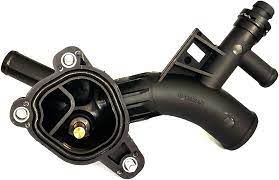Description :
Car water, commonly known as engine coolant or antifreeze, is a crucial fluid in a vehicle's cooling system. Its primary function is to absorb and dissipate excess heat generated by the engine during combustion, preventing the engine from overheating. Here is a detailed description of used car water or engine coolant:
1. Composition:
- Base Fluid: Engine coolant is typically a mixture of water and a specialized coolant solution. The most common coolant solutions contain ethylene glycol or propylene glycol as the base fluid.
- Additives: Various additives are included to enhance the coolant's performance, such as corrosion inhibitors, lubricants, and anti-foaming agents.
2. Purpose:
- Heat Dissipation: The primary purpose of used engine coolant is to absorb heat from the engine and transfer it to the radiator, where the heat is dissipated into the surrounding air.
- Freeze Protection: Engine coolant includes antifreeze properties to prevent the water in the cooling system from freezing in cold temperatures.
3. Cooling System Components:
- Location: The radiator is a key component of the cooling system where the coolant releases heat to the air.
- Water Pump: The water pump circulates the coolant through the engine and the radiator, maintaining a continuous flow.
4. Temperature Regulation:
- Thermostat: A thermostat controls the flow of coolant based on the engine's operating temperature. It helps the engine reach its optimal operating temperature quickly.
5. Types of Coolant:
- Ethylene Glycol: Commonly used in traditional coolant formulations, providing effective freeze protection and heat transfer.
- Propylene Glycol: An alternative to ethylene glycol, it is less toxic and considered safer for pets and the environment.
6. Maintenance:
- Coolant Flush: Periodic coolant flushes are recommended to remove contaminants, replenish additives, and maintain the coolant's effectiveness.
- Coolant Level Check: Regularly checking the coolant level in the radiator or coolant reservoir is important to ensure proper cooling system function.
7. Color:
- Color Variations: Coolants come in various colors, including green, orange, pink, and blue. The color may indicate the type of coolant and its specific formulation.
8. Compatibility:
- Manufacturer Recommendations: It is crucial to use a coolant that is compatible with the vehicle's make and model. Consult the vehicle's manual for manufacturer recommendations.
In summary, car water or engine coolant is a vital component in the cooling system, preventing engine overheating and providing protection in both high and low temperatures. Regular maintenance and using the right type of coolant are essential for optimal engine performance and longevity.


